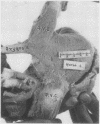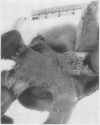Abstract
The myocardial fibres of the posterior wall of the atrio-venous junctions were examined in 35 large domestic mammals. In the majority of specimens a common pattern in the course and organization of the fibres could be observed. The most obvious features were the following: (1) a main circular fascicle surrounding the pulmonary trunks; (2) fibres encircling the atriovenous junctions; and (3) myocardial sleeves extending along the veins, occasionally as far as the lung. The superior part of the left atrial wall was consistently thicker than the inferior section. Individual variations of this wall between the various trunks followed one of four patterns—vertical, oblique, horizontal or criss-crossed. Differences between mammal and human hearts were found regarding the number of pulmonary trunks, the presence of the oblique vein of the left atrium, and the extension of the myocardial sleeves on the caval vein. This extension on the caval vein continues over the end of the azygos vein in animals. The functional significance of the structures described in this study is discussed.
Full text
PDF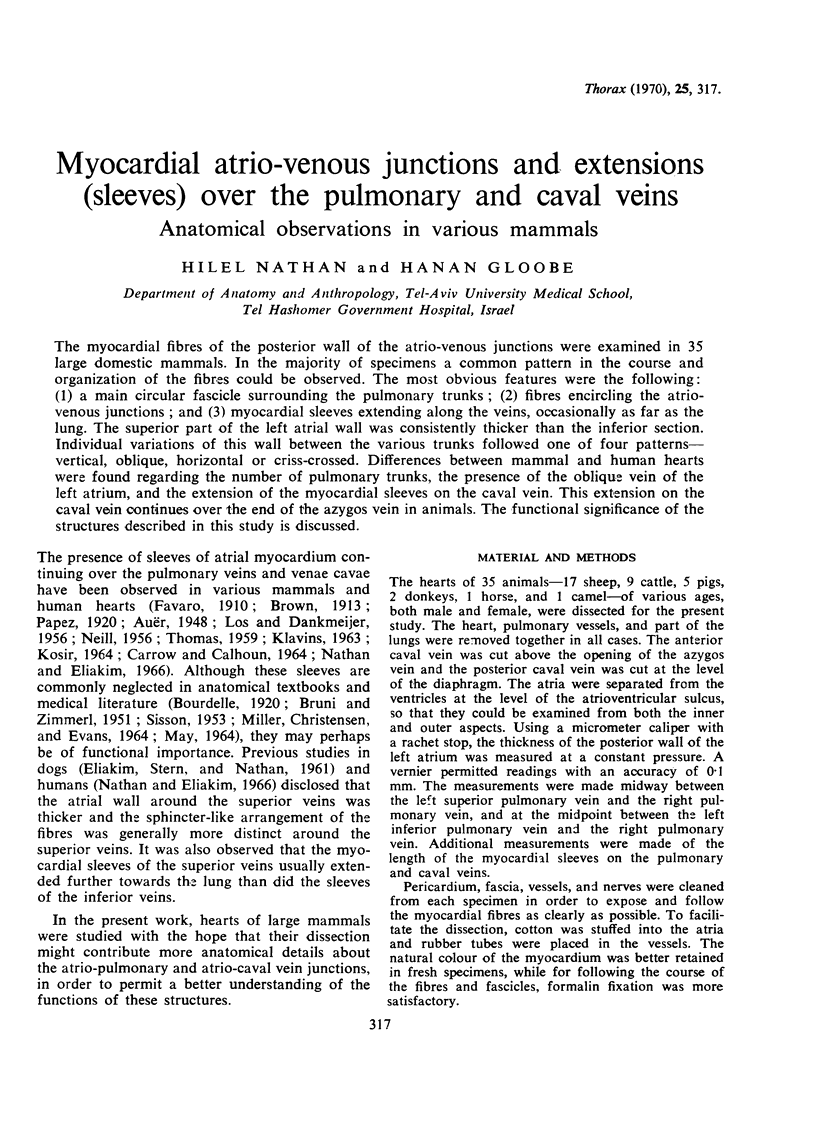
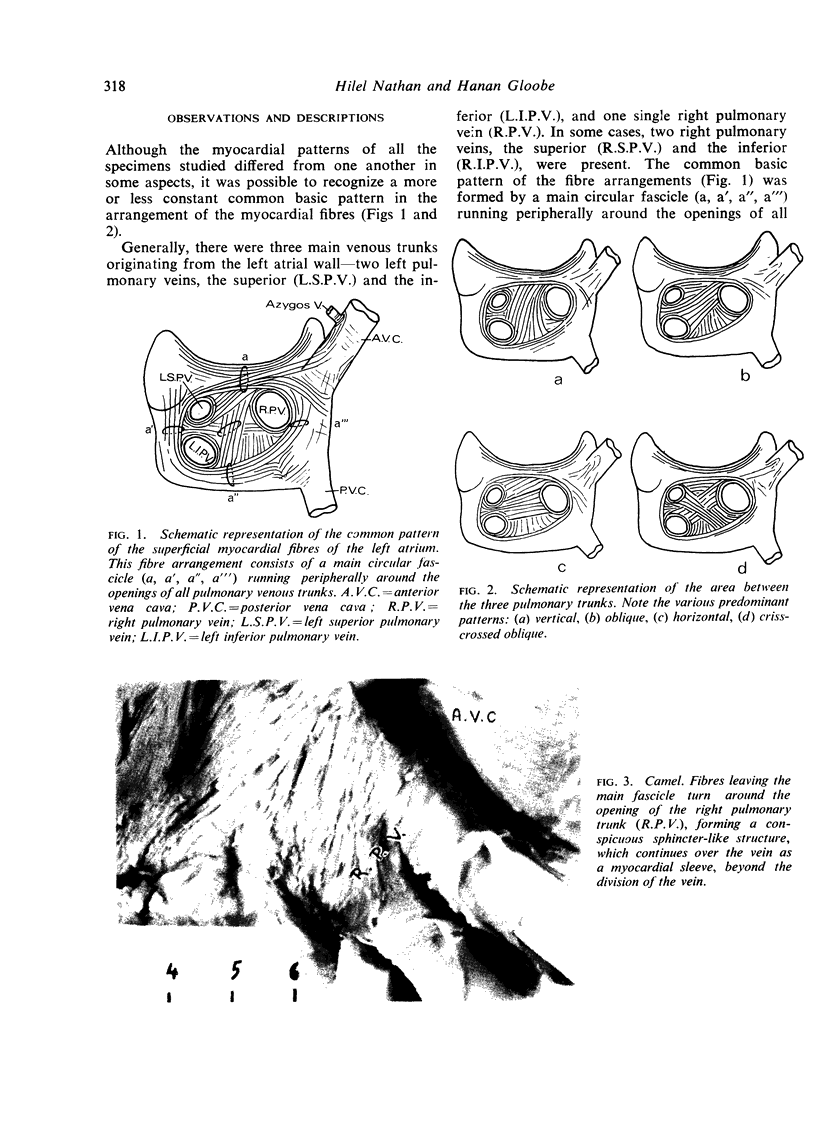
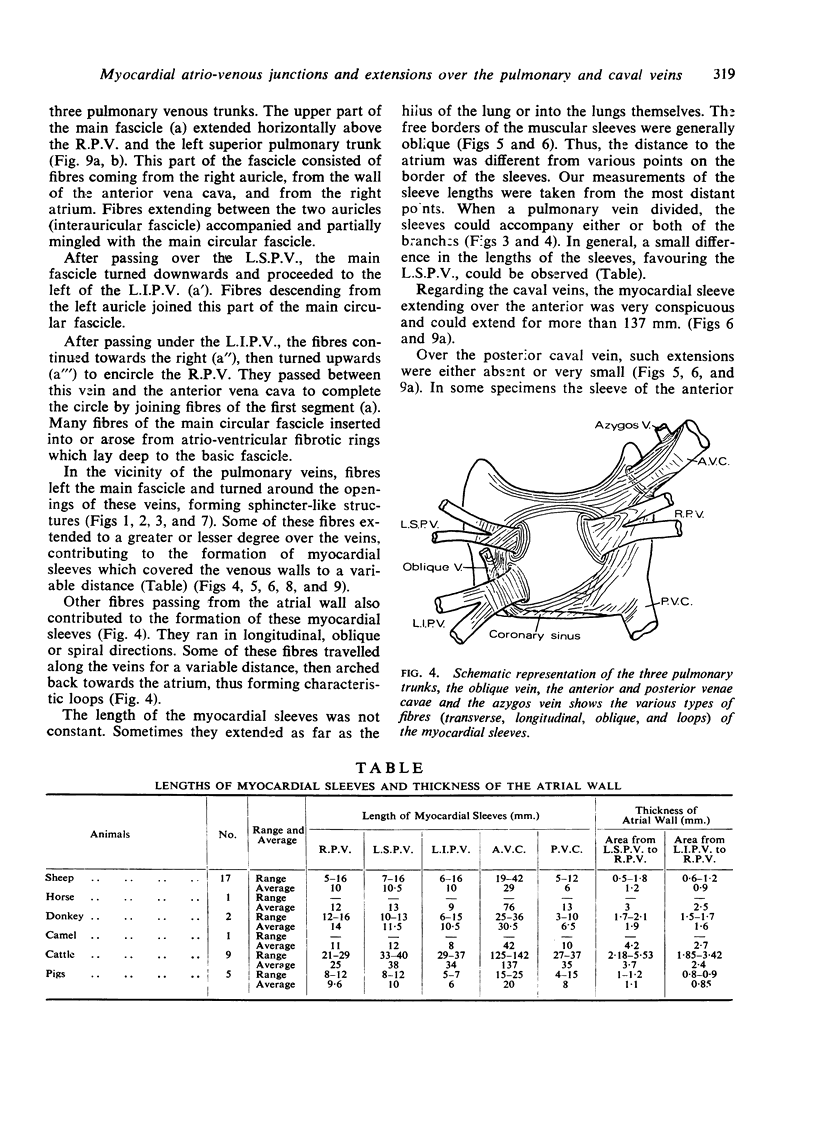
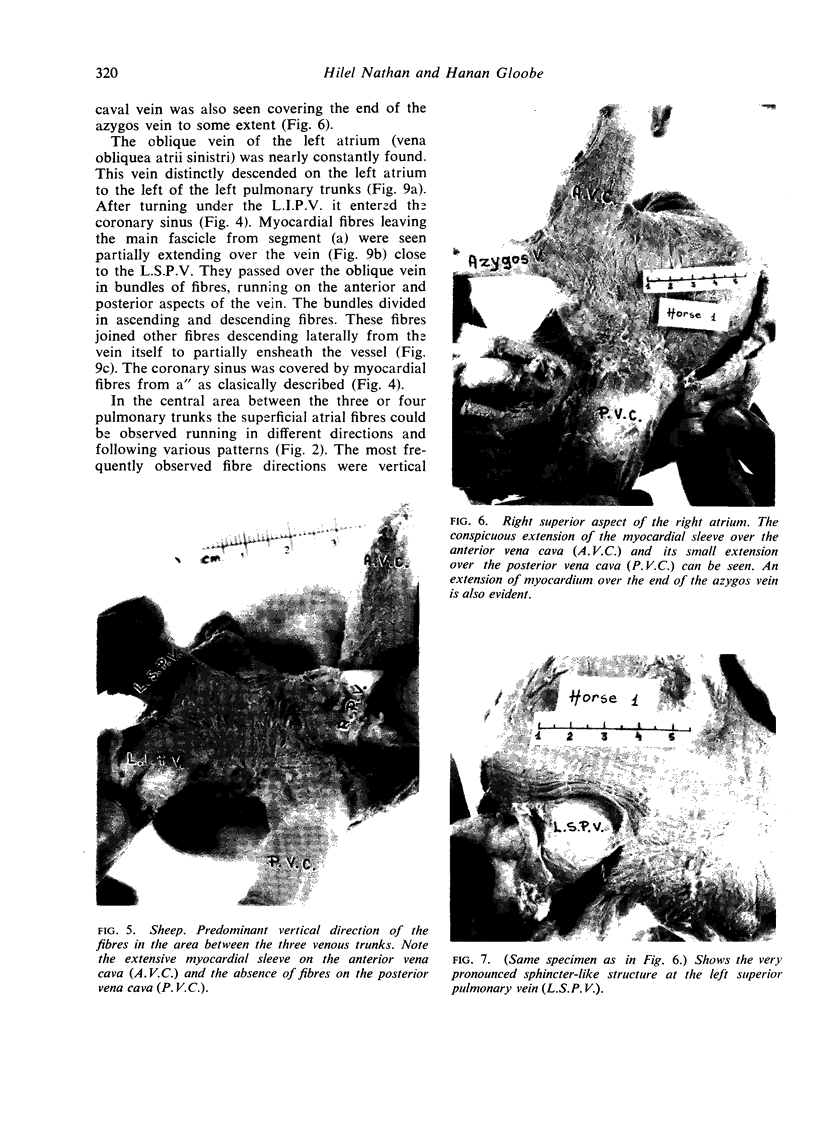
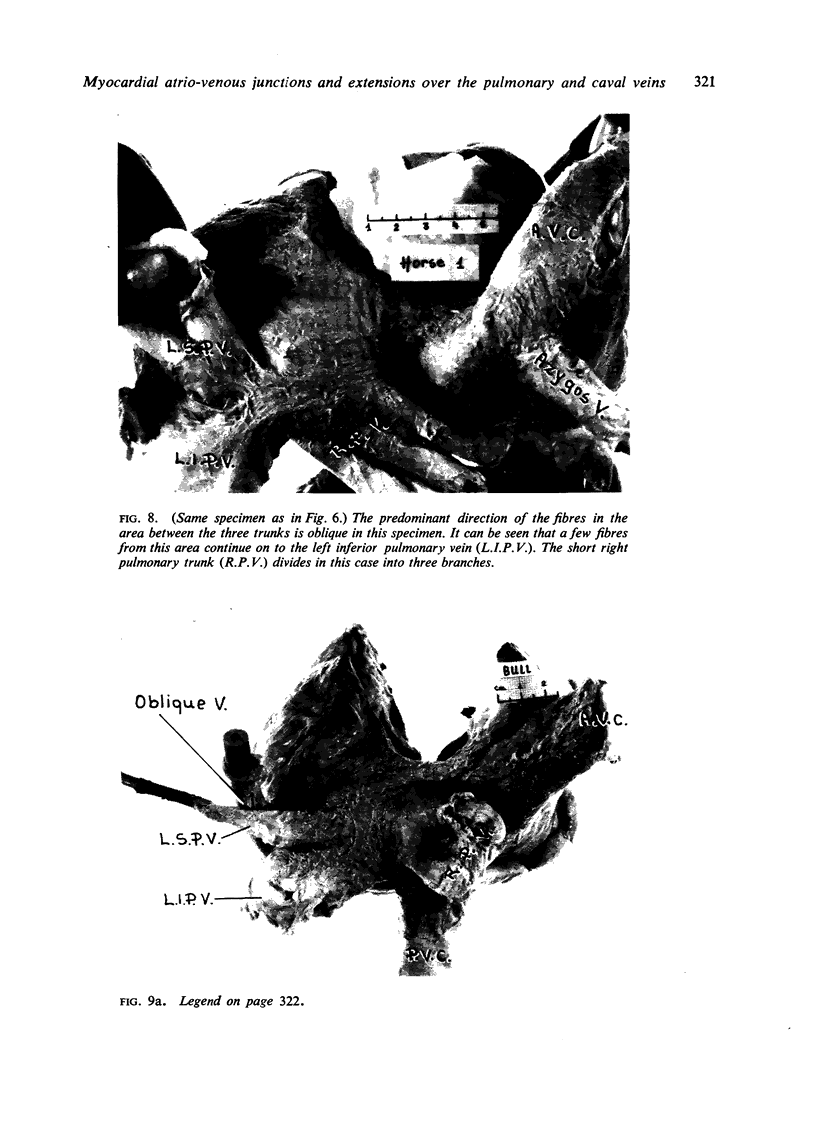
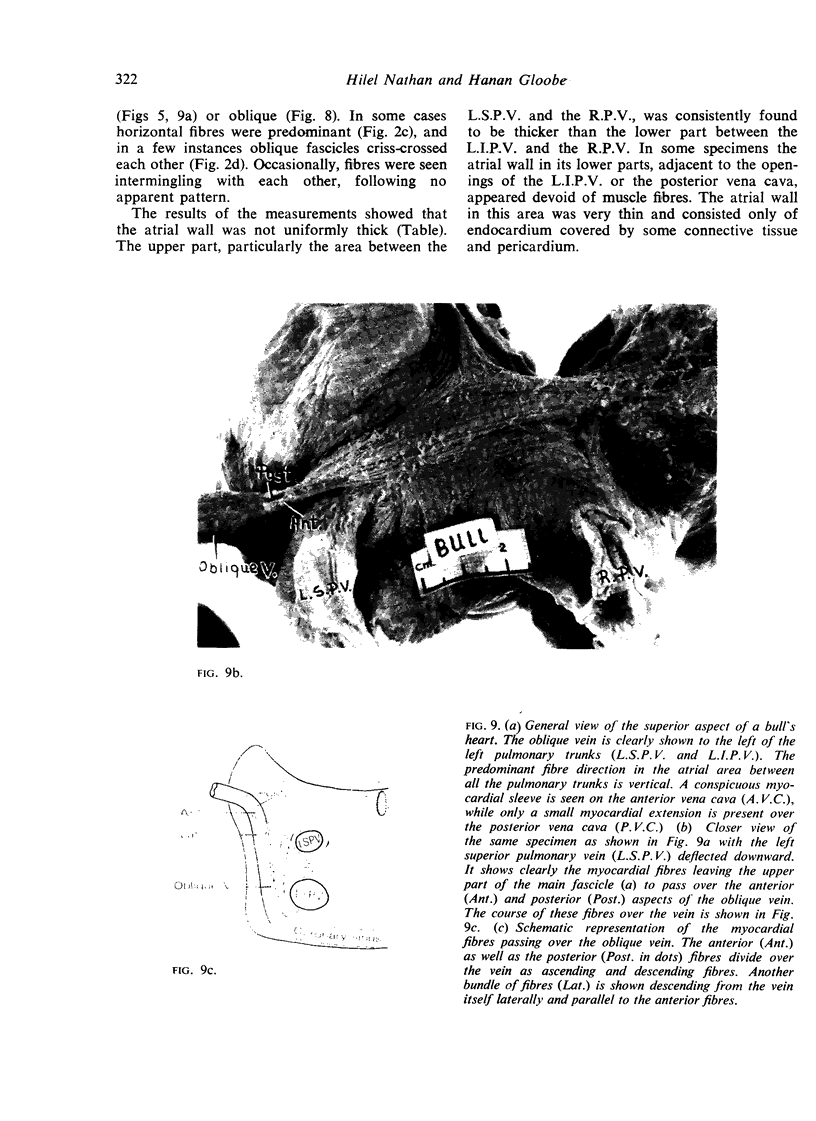
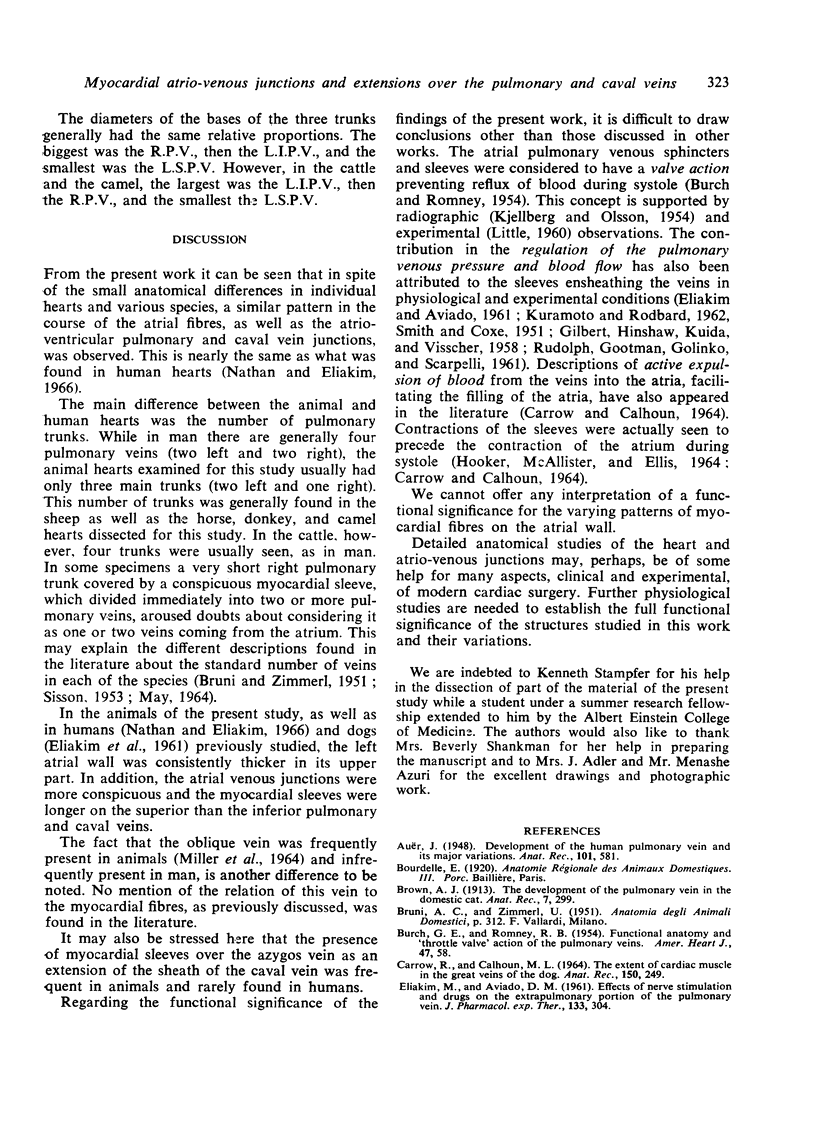
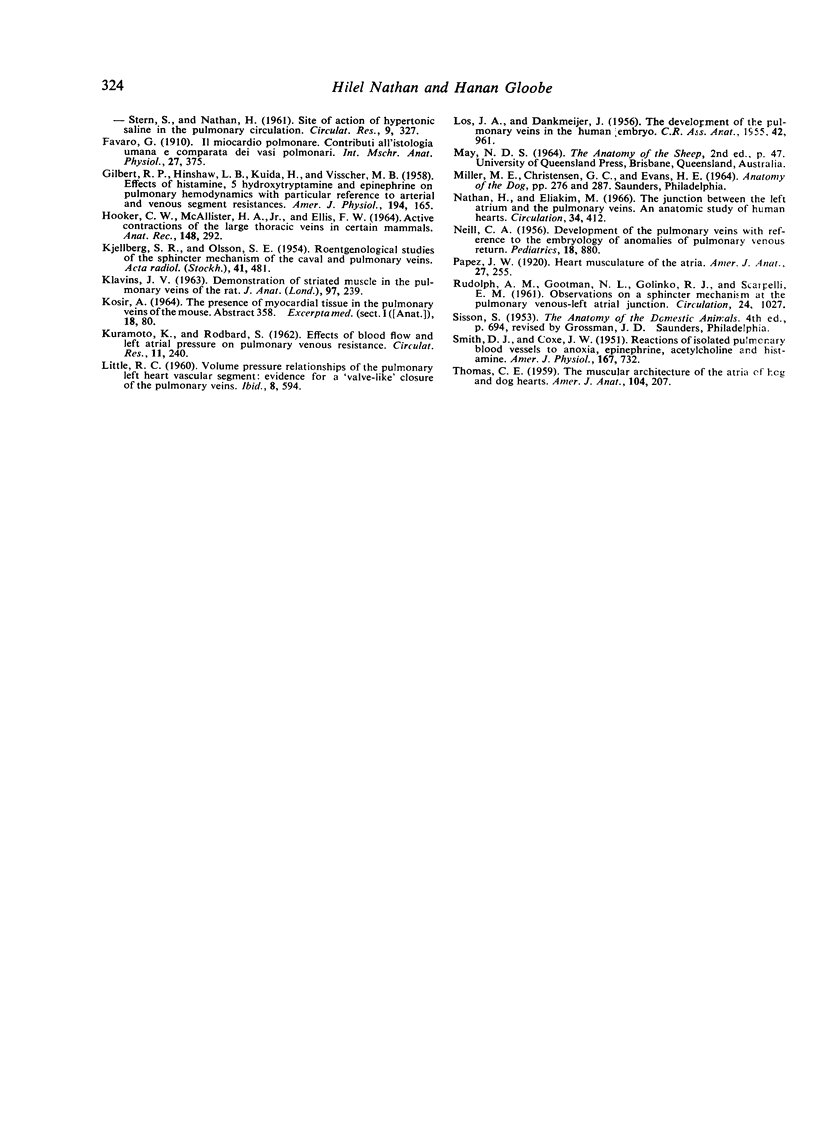
Images in this article
Selected References
These references are in PubMed. This may not be the complete list of references from this article.
- BURCH G. E., ROMNEY R. B. Functional anatomy and throttle valve action on the pulmonary veins. Am Heart J. 1954 Jan;47(1):58–66. doi: 10.1016/0002-8703(54)90211-2. [DOI] [PubMed] [Google Scholar]
- CARROW R., CALHOUN M. L. THE EXTENT OF CARDIAC MUSCLE IN THE GREAT VEINS OF THE DOG. Anat Rec. 1964 Nov;150:249–256. doi: 10.1002/ar.1091500306. [DOI] [PubMed] [Google Scholar]
- ELIAKIM M., AVIADO D. M. Effects of nerve stimulation and drugs on the extrapulmonary portion of the pulmonary vein. J Pharmacol Exp Ther. 1961 Sep;133:304–312. [PubMed] [Google Scholar]
- ELIAKIM M., STERN S., NATHAN H. Site of action of hypertonic saline in the pulmonary circulation. Circ Res. 1961 Mar;9:327–332. [PubMed] [Google Scholar]
- GILBERT R. P., HINSHAW L. B., KUIDA H., VISSCHER M. B. Effects of histamine, 5 hydroxytryptamine and epinephrine on pulmonary hemodynamics with particular reference to arterial and venous segment resistances. Am J Physiol. 1958 Jul;194(1):165–170. doi: 10.1152/ajplegacy.1958.194.1.165. [DOI] [PubMed] [Google Scholar]
- KJELLBERG S. R., OLSSON S. E. Roentgenologic studies of the sphincter mechanism of the caval and pulmonary veins. Acta radiol. 1954 Jun;41(6):481–497. doi: 10.3109/00016925409170692. [DOI] [PubMed] [Google Scholar]
- KLAVINS J. V. Demonstration of striated muscle in the pulmonary veins of the rat. J Anat. 1963 Apr;97:239–241. [PMC free article] [PubMed] [Google Scholar]
- KURAMOTO K., RODBARD S. Effects of blood flow and left atrial pressure on pulmonary venous resistance. Circ Res. 1962 Aug;11:240–246. doi: 10.1161/01.res.11.2.240. [DOI] [PubMed] [Google Scholar]
- LITTLE R. C. Volume pressure relationships of the pulmonary-left heart vascular segment. Evidence for a "valvelike" closure of the pulmonary veins. Circ Res. 1960 May;8:594–599. doi: 10.1161/01.res.8.3.594. [DOI] [PubMed] [Google Scholar]
- NEILL C. A. Development of the pulmonary veins; with reference to the embryology of anomalies of pulmonary venous return. Pediatrics. 1956 Dec;18(6):880–887. [PubMed] [Google Scholar]
- Nathan H., Eliakim M. The junction between the left atrium and the pulmonary veins. An anatomic study of human hearts. Circulation. 1966 Sep;34(3):412–422. doi: 10.1161/01.cir.34.3.412. [DOI] [PubMed] [Google Scholar]
- SMITH D. J., COXE J. W. Reactions of isolated pulmonary blood vessels to anoxia, epinephrine, acetylcholine and histamine. Am J Physiol. 1951 Dec;167(3):732–737. doi: 10.1152/ajplegacy.1951.167.3.732. [DOI] [PubMed] [Google Scholar]
- THOMAS C. E. The muscular architecture of the atria of hog and dog hearts. Am J Anat. 1959 Mar;104:207–236. doi: 10.1002/aja.1001040203. [DOI] [PubMed] [Google Scholar]




